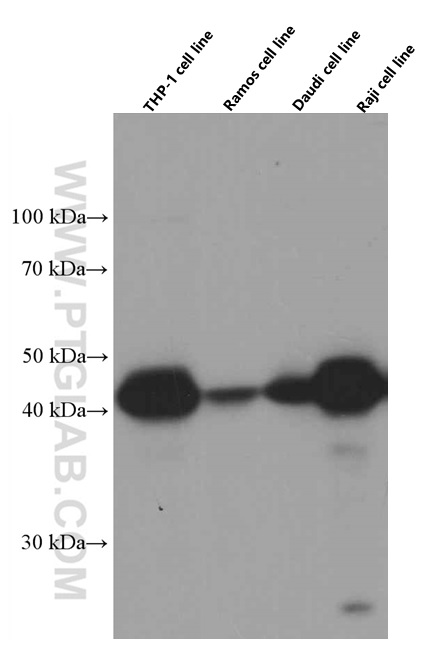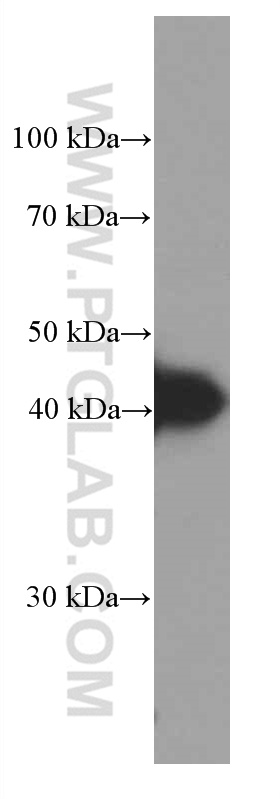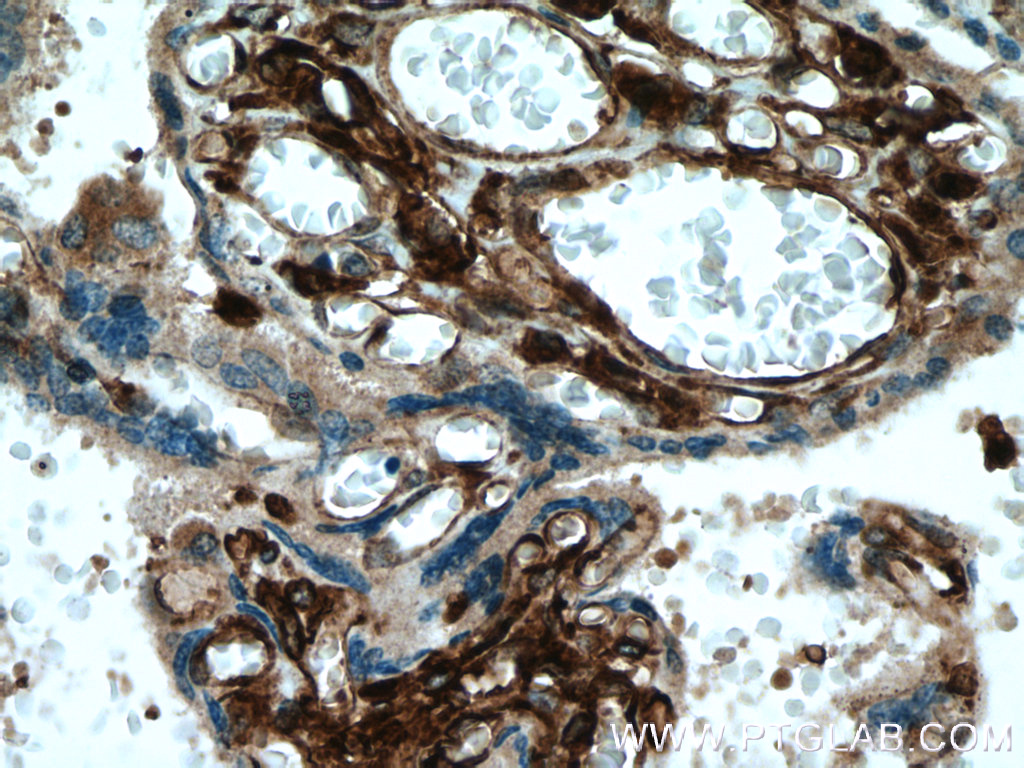验证数据展示
产品信息
66530-1-PBS targets HLA-E in WB, IHC, IF-P, Indirect ELISA applications and shows reactivity with Human samples.
| 经测试应用 | WB, IHC, IF-P, Indirect ELISA Application Description |
| 经测试反应性 | Human |
| 免疫原 | HLA-E fusion protein Ag6724 种属同源性预测 |
| 宿主/亚型 | Mouse / IgG2a |
| 抗体类别 | Monoclonal |
| 产品类型 | Antibody |
| 全称 | major histocompatibility complex, class I, E |
| 别名 | EA1.2, EA2.1, HLA 6.2, HLA E, HLAE, HLA-E, MHC, MHC class I antigen E, QA1 |
| 计算分子量 | 40 kDa |
| 观测分子量 | 40 kDa |
| GenBank蛋白编号 | BC002578 |
| 基因名称 | HLA-E |
| Gene ID (NCBI) | 3133 |
| RRID | AB_2881893 |
| 偶联类型 | Unconjugated |
| 形式 | Liquid |
| 纯化方式 | Protein A purification |
| UNIPROT ID | P13747 |
| 储存缓冲液 | PBS only , pH 7.3 |
| 储存条件 | Store at -80°C. The product is shipped with ice packs. Upon receipt, store it immediately at -80°C |
背景介绍
Human major histocompatibility complex (MHC) antigens, also referred to as human leukocyte antigens (HLA), are encoded by genes located on the short arm of chromosome 6 (6p21.3). There are two classes of HLA antigens: class I and class II. This class I molecules are membrane glycoproteins composed of a heavy (alpha) chain which is encoded by a HLA class I gene, and β2-microglobulin light (beta) chain. The most extensively characterized members of the HLA class I gene family are the genes encoding the major transplantation antigenes, HLA-A, B and C. HLA-E is a non-classical MHC class I molecule. HLA-E is frequently overexpressed in tumor diseases, transplants and virus-infected cells and represents an immunomodulatory molecule by binding to the receptors CD94/NKG2A, -B and -C on NK and T cells. Due to its immune suppressive features HLA-E expression might represent an important mechanism of tumors to escape immune surveillance.(PMID: 667938; 3375250; 2249951; 27589686)








